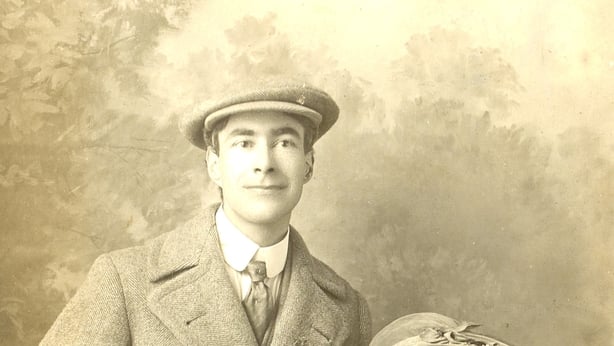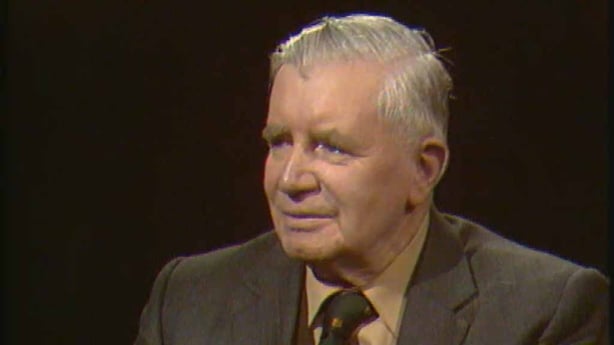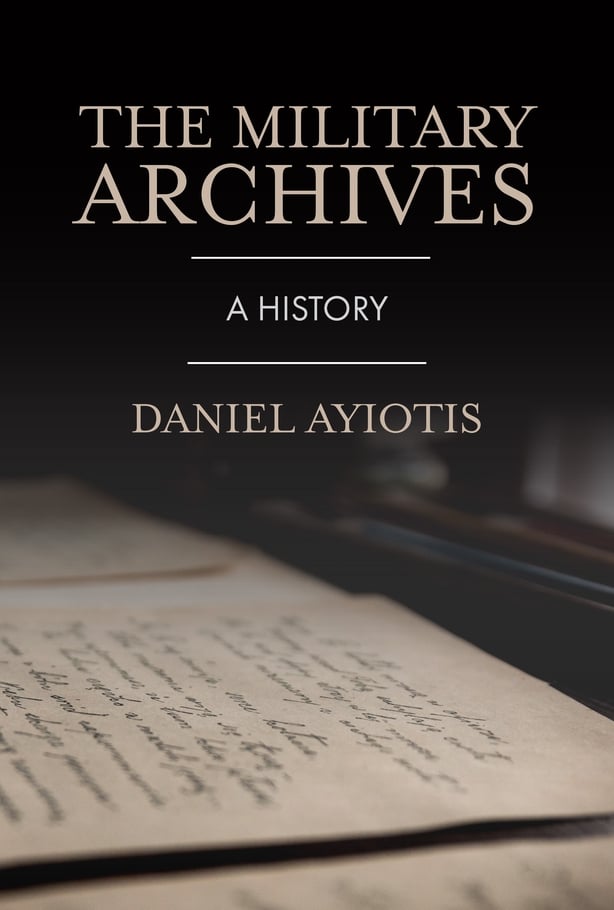WE present an extract from The Military Archives: A History, the new book by Daniel Ayiotis, Director of Ireland's Military Archives.
Daniel Ayiotis skilfully explores how the Military Archives developed out of the vision almost a century ago of a handful of far-sighted military and civilians. That small visionary group saw the need to preserve Ireland's military records. Their vision became today’s outward facing and internationally renowned Military Archives, the place of deposit for records relating to the Defence Forces and the Department of Defence. In exploring its history, he shows, to quote President Michael D. Higgins, 'the fundamental importance of the Military Archives towards our understanding of the founding events of the state’ and indeed, of the century that has followed.
The Decade of Centenaries has been an opportunity to assess and reassess the legacy of Ireland's independence struggle. Hindsight, they say, is 20/20, and a century’s distance has facilitated more honest and holistic analysis. Central to this has been access to good archival sources.
Among the most prominent institutions in this regard has been the Military Archives, custodians of one of the state’s flagship projects – the Military Service (1916-1923) Pensions Collection – as well as the Bureau of Military History 1913-1921, the Collins Papers, the 1922 Army Census, early Department of Defence records and more.
While many know about its collections, far fewer know the story of the institution itself, one that goes back as far as 1923. It's a tale of successes and failures, foresight and negligence, ambition and apathy.
Most importantly, it’s a story about people.
Piaras Béaslaí and the Seeds of the Military Archives
This time one hundred years ago, Commandant General Piaras Béaslaí was authoring the official biography of his friend and comrade, Michael Collins. A journalist by profession, Béaslaí had been Director of Publicity for the IRA and later the National Army.

Image courtesy of the National Library of Ireland
In connection with this project, Béaslaí requested the assistance of another revolutionary veteran, Captain J.J. Burke, for a 'special job.’ Burke’s job involved gathering records that ‘would be of great value for reference as a complete history of the Irish Volunteers, IRA, and the starting of the Regular Army, as well as the Anglo-Irish and Irregular Wars.’ After the Civil War, Béaslaí requested permission to establish a temporary ‘War Records’ office to consolidate these files. Unfortunately, his request was refused due to the significant demobilisation going on at the time.
M.J. Costello
The torch was taken up in 1924 by another revolutionary veteran, Colonel M.J. Costello, the Army's Director of Intelligence and later managing director of the Irish Sugar Company. The institutional value of archives became evident when the new military pensions legislation necessitated a means of verifying pre-Truce service. As the Army HQ section bearing responsibility for 'records', Intelligence Branch also inherited files including the Kilmainham Papers (correspondence and papers of the British commanders in Ireland) and thousands of Civil War intelligence and operational files. To meet this demand, Costello established the Military Archives as a sub-section of Intelligence in 1924, with Captain Alphonsus Blake and Mr Thomas Galvin (a civilian clerk) in charge.

At the same time, Costello received reports that Éamon de Valera and other anti-Treatyites were ‘working hard on an "Archives" from their point of view.’ The battle to become the keepers of the revolutionary flame had begun. However, despite comprehensive schemes of organisation being produced between ’24 and ’26, the government refused to officially sanction the establishment of the Military Archives throughout their decade in power.
Liam Archer and Desmond FitzGerald
Galvin and Blake left the Army in 1926 and the Archives stagnated. As a parting blow, the Minster for Defence, Desmond Fitzgerald, issued the infamous ‘Destruction Order’ of 7th March 1932. Fearing reprisals from their former adversaries, this directed that all Civil War intelligence reports, secret service vouchers, proceedings of military courts, reports and details of executions, be burned before handing over power to Fianna Fáil. Despite frantic attempts by the Director of Intelligence, Colonel Liam Archer (who had served under Béaslaí in the Irish Volunteers), and his staff to list the files prior to destruction, he did not have enough time before the order came into effect.

Image courtesy of the National Library of Ireland
E.V. O'Carroll and 'Ginger' O’Connell
The Military Archives enjoyed a revival with Fianna Fáil coming to power and a period of increased political recognition of the need to document the Irish revolutionary years. Colonel E.V. O’Carroll, who had commanded the Army’s 5th Northern Division during the Civil War, was the Director of Intelligence who oversaw the establishment of the Anglo-Irish Conflict Project in 1933. This (albeit unsuccessful) attempt to capture the testimonies of serving Army officers with pre-Truce service was sanctioned by de Valera and was a precursor to the Bureau of Military History in the 1940s.
1935 saw the first formal appointment of an 'Officer-in-Charge’ of the Military Archives. This was Colonel J.J. ‘Ginger’ O’Connell, formerly the Army’s Deputy Chief of Staff whose kidnapping by anti-Treaty forces occupying the Four Courts precipitated its shelling. Assisted by Commandant Niall Charles Harrington (a keen Parnellite historian, later writer and broadcaster), Ginger’s ability and personality raised the fortunes and profile of the Military Archives, despite scarce recourses and varying degrees of support within the Army and Department. When Ginger died suddenly in 1944 the Military Archives limped along, being removed from the official establishment of the Defence Forces in 1959 following a reorganization.

Peter Young and Victor Laing
The Military Archives as it stands today is attributable, first-and-foremost, to the vision and determination of Commandant Peter Young. As Assistant Army Press-Officer, he successfully fought for the Archives’ re-establishment, which happened in 1982. Despite facing many of the same challenges as his predecessors, by 1990 the Archives had become the ‘official place of deposit’ for the records of the Defence Forces, Department of Defence and Army Pensions Board, under the provisions of the National Archives of Ireland Act, 1986.
One of Young’s final achievements in office, just a few weeks before his premature death in 1999, was securing the release of the Bureau of Military History records into the custody of the Military Archives. The torch was then picked up by his long-time deputy, Commandant Victor Laing, who oversaw the release of the Bureau records and later their digitization, a project which contributed to his receiving an honorary doctorate from UCD. When Laing retired in 2012 his successors inherited an institution on an upward trajectory, the zenith of which was the opening in 2016 of a new purpose-built archival facility at Cathal Brugha Barracks – a fitting tribute to him and all who came before, as well as to those renowned and unsung veterans of the Irish independence struggle whose names and deeds are kept within its walls.
Daniel Ayiotis is the Director of the Military Archives and a commandant in the Irish Army, based at Cathal Brugha Barracks, Rathmines, Dublin. His book ‘The Military Archives: A History’ is out now - find out more here.

